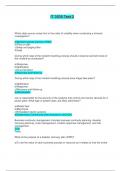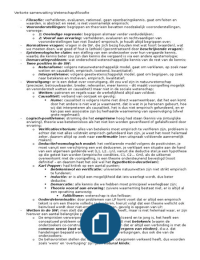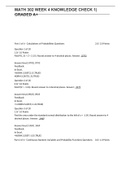Notes lectures Nudge Influencing Behavior
Lecture 1: Introduction (29 October 2018)
Nudge: to push against gently, especially in order to gain attention or give a signal.
Any aspect of the “choice architecture” that alters people’s behavior in a predictable way without
forbidding options or dramatically changing economic incentives.
They’re not mandates. Must be cheap and easy to avoid.
People are aware of the nudges (transparent)
Big problems, small solutions
- Put fruit in the entrance of supermarket, put unhealthy food further away to reach
- Holle Bolle Gijs
- Happy faces at a speed limit electronic board (positive feedback)
Why do we need nudges?
We find it hard to do the things we like us to do.
Difference between long-term interests and short-term wants
Traditional economics
Incentives (punish if wrong behavior, reward when good behavior)
Assumes humans are “optimal” decision making machines
- Reasoning capacity is infinite
- Incentives can solve all problems
- Markets are perfectly efficient
- Every act is entirely selfish
Assumptions of the standard economic model of consumer behavior
1. People are rational
2. People act with full information (full external knowledge)
3. People have known preferences (full internal knowledge)
4. People choose the best option available (maximize utility)
System 1 System 2
Fast Slow
Unconscious Conscious
Parallel Serial
Associative Analytic
Low energy Consumes a LOT of energy
‘Doer’ ‘Planner’
System 1: intuitive, fast, reactionary
- Works by creating hypotheses and testing these with prior knowledge
- Meanwhile sorts between relevant and irrelevant bits and pieces of information
- You can activate this system by will, and it resembles what we typically associate with thinking
in many ways
System 2: higher-level reasoning, cognitive, slower, resource dependent
- Controls day to day thoughts – how much butter to spread, …
- Although the reflective system might seem superior to the automatic system, it really isn’t.
- The reflective system is simply too slow and too single minded to handle even a fraction of the
alternatives we are faced with every day
, NIB Dominique van Schagen
- The automatic system can handle thousands of problems and alternatives for us without even
bothering us with the outcomes
Two systems of thinking
The two systems generally work well together, allowing us to act quickly and instinctively when
required, or allowing deep, powerful thought
However don’t always work well.. can ‘fail’ in many different ways
Automatic system is especially prone to bias, in fact it uses bias to speed up decision making
While the reflective system can often back up or reinforce decisions made
Which system is used?
People often use their intuitive fast System 1
Especially when we are rushed, tired, not paying attention
Liberalism
The state should have respect for all citizens as free and equal human beings
The state should enable all citizens to develop and pursue their own conceptions of the good life
Harm to others is only basis for legitimate government intervention
“Free will”
Paternalism
Goes further than the minimalist ‘no harm’ principle of liberalism and argues that people should also
be protected against harming themselves
The state should promote the interests of all citizens in living secure, healthy, wealthy, and happy lives
The state should interfere with people’s liberties if this generates desirable outcomes
Libertarian paternalism (nudging)
Thomas Paine, Greg Johnson
Aims to improve people’s choices by being both:
- Libertarian: it does not block people’s choices and thus respects people’s negative or formal
liberty
- Paternalistic: it makes people better off and thus improves their well-being (health, wealth,
happiness)
Getting people to behave differently
Doesn’t mean we should not use incentives, prohibition and informing people
But: we should also use subconscious nudges, peer-to-peer persuasion, and social marketing among
other things
Principles of nudge
- Psychological ways of changing behavior
- Focus on “guiding” behavior (instead of influencing)
- Instead of using incentives and information, use cues, frames, defaults
- No force or prohibition! Preserve freedom of choice
- Minimal costs
- Change of choice architecture
Choice architecture
A choice architects designs the choice environment so as to encourage the chooser to select a
preferred choice
Maintain chooser’s freedom to select other choices
Make desirable choices available, and EASIER






